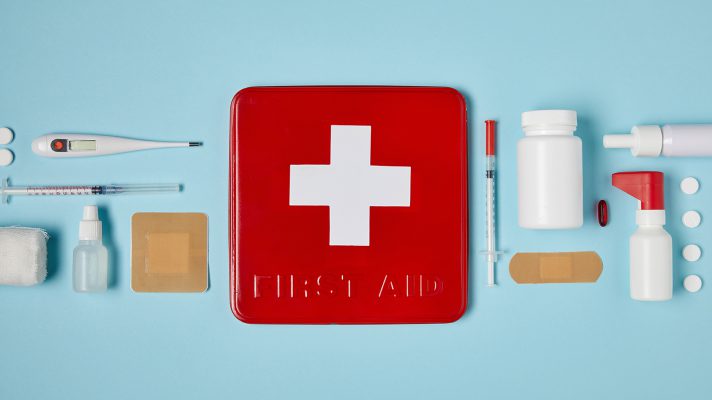
Millions of medical visits are required each year due to unintentional injury. Many minor injuries, such as those caused by accidents, can be treated at home with just a few basic medical supplies. A home emergency kit with all the necessary medical supplies is essential for any injury or emergency.
There are many options for first aid kits. You can buy a kit that is already assembled, or you can make your own. These are the eight most important items to have in your first aid kit.
1. Containers
To hold all your items, you will first need a water-resistant container. To organize your items, you may need a soft pouch that has multiple compartments. A backpack can be reused or a first aid bag purchased. The Orca Tactical MOLLE-EMT utility pouch is a popular choice. It features elastic straps and a drawstring bag. There’s also a large pocket for small supplies. You may also need small plastic bags or pill bottles to store small items, and a marker for labeling them.
2. Personal items
A list of emergency numbers should be kept, including the ones for dentists, doctors, and family members. Keep a few extra doses of insulin or medication for yourself or your family members. You’ll always have a backup supply in case you run out of prescriptions or are unable to get to the pharmacy.
Here are some tips to keep medications safe in an emergency kit
- You should keep prescriptions in the original packaging so that you have all relevant information, including warnings and contact details for your pharmacist.
- Check the expiration dates of your medications regularly and replace as necessary. They should be replaced at least every six months.
- Keep insulin in a cool place if you have it. To remind yourself to get insulin from the fridge, you can pin a sticky note on the outside of your kit.
3. Antiseptic
To prevent skin irritations and infections, it is important to immediately clean any cuts, wounds, or bites. Antibacterial soap, hydrogen peroxide and pain relief cream should be kept in your first aid kit. To clean a wound, you should wash your hands with soap. A liquid topical solution can be used or you can use antiseptic wipes. Bactine is a non-stinging option for those who are sensitive to hydrogen peroxide. Apply pain relief cream after cleaning.
4. Creams and ointments
A couple of ointments are essential for any first aid kit: an anti-itch cream and aloe vera gel. Aloe vera gel can be used to soothe and treat burns. It moisturizes the skin and relieves itching. Cortisone reduces itching caused by bug bites, inflammation, and rashes.
5. Pain relief
For pain relief from injuries or illnesses, pain relievers are essential. We recommend keeping a small supply of pain relievers available: acetaminophen and ibuprofen are good options.
Aspirin can be used to treat headaches, joint pain, fevers, and aches.
Acetaminophen can also be used to treat headaches. However, unlike aspirin it is not an anti-inflammatory so it will not help with muscle pains or sprains.
Ibuprofen is great for relieving headaches, joint and muscle pain, reducing inflammation, and lowering fevers.
If a child has been diagnosed with a virus, Aspirin should not be used. It can cause Reye’s Syndrome. A non-aspirin-based pain reliever will mean that you don’t have to worry about treating headaches with what you have on hand.
6. OTC medications
It’s impossible to predict when you might get food poisoning, the flu, an allergic reaction, or have to eat something that isn’t right. Over-the-counter medications can be helpful in relieving symptoms.
You should always have antacid tablets and Pepto-Bismol on hand in case of heartburn, indigestion, stomach upset, or other symptoms. If you have seasonal allergies, an antihistamine can help with sneezing and itching.
7. Wraps and bandages
A first aid kit should contain a variety of wraps and bandages to treat minor cuts, burns and sprains. You don’t have to visit the doctor for minor injuries. Instead, you can treat them yourself using the right bandages.
Your first aid kit should include gauze for larger cuts, adhesive bandages for smaller wounds, gauze to stop bleeding, an aluminum splint for support of injured or sprained limbs, as well as athletic tape to protect tender or vulnerable joints.
8. Medical tools
A few basic tools are necessary for your first aid kit. You will need a thermometer to monitor your temperature and determine if you feel ill or not.
To remove any foreign objects or splinters from your skin, keep a tweezer handy. A blunt-tip razor is needed to cut gauze and bandages without inadvertently cutting your skin. Also, a cold compress can be used for quick relief of aches and pains.
After you have assembled your first aid kit, make sure it is regularly stocked and kept current. Check your first aid kit every six months and replenish or replace any supplies that are damaged.
Keep your first aid kit handy and teach your children how to use it. You can quickly treat minor injuries and get rid of any aches and pains with a fully-assembled first aid kit at your home.